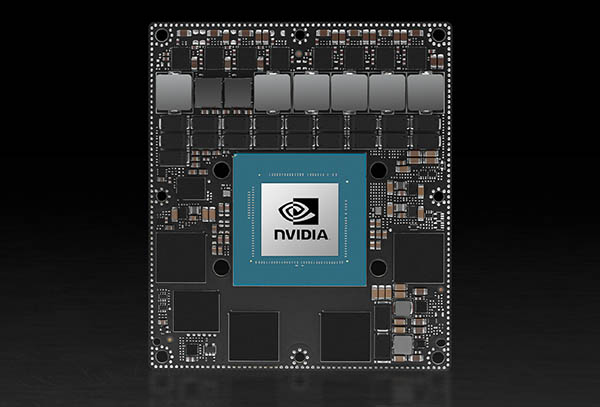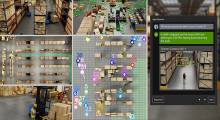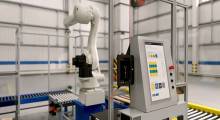Robotics and artificial intelligence continued to converge in 2021, with the emerging hardware and software stack expanding the capabilities of mobile robots, drones, robotic manipulation, and autonomous vehicles. What will the new year bring? Murali Gopalakrishna, head of product management and autonomous machines, as well as general manager for robotics at NVIDIA Corp., has some ideas.
Gopalakrishna leads the business development team that focuses on robots, drones, the industrial Internet of Things (IIoT), and enterprise collaboration products. He holds a bachelor of engineering from the National Institute of Engineering in India.
Before joining NVIDIA in 2016, Gopalakrishna was the global head of platform and technology strategy, leading the chief technology officer's office at Sony Mobile Communications. He was responsible for products ranging from phones, tablets, and wearables to IoT platforms.
Gopalakrishna shared his thoughts with Robotics 24/7 about Santa Clara, Calif.-based NVIDIA's achievements, as well as some predictions for 2022:
NVIDIA looks back at 2021
What were your organization's biggest accomplishments this past year?
Gopalakrishna: NVIDIA Isaac Sim on Omniverse is now available to roboticists worldwide. Customers, developers, and researchers can accelerate robotics development as they leverage the high-fidelity PhysX engine and photorealistic environments.
In partnership with Open Robotics, NVIDIA announced support for the Robot Operating System (ROS) and ROS2, and we launched the Isaac ROS library, which includes highly performant robotics and AI algorithms.
With NVIDIA’s support for ROS, the open-source community now has the tools necessary to take robotics applications to the next level.
Isaac Sim is capable of generating synthetic data for training DNNs [deep neural networks] for robotics use cases.
NVIDIA launched new computing platforms specifically for robotics and edge AI use cases.
Key announcements include an industrial version of the flagship Jetson AGX Xavier system-on-module (SOM) and the new next-generation Jetson AGX Orin platform built on the NVIDIA Ampere architecture. It brings unprecedented computing power—200 TOPS [trillions of operations per second]—to edge devices and applications.
We've seen lots of transactions around robotics software and AI startups—do you expect that trend to continue?
Gopalakrishna: We definitely expect the trend of robust investments in robotics companies to continue. We believe that we are in the very early stages of robots being developed and deployed to improve efficiencies and make our lives easier.
The near-term labor shortages and pandemic-related issues have only highlighted this critical need for automation and accelerated the investment cycle.
Simulation to help robots scale
Speaking of labor shortages, we've all heard about that and spiking e-commerce demand, but automation isn't yet widespread. What needs to change?
Gopalakrishna: The fact is that it is still very involved, risky, and expensive to deploy robots in a dynamic, fast-paced logistics environment. It has to be easy for customers to estimate the number of robots required and the types of robots required to optimize a logistics operation.
The ability to simulate at factory scale will help make it simpler to add more automation to facilities. Running different scenarios in virtual worlds instead of trial and error in the real world is the future.
What area of robotics can benefit most from NVIDIA's offerings—manipulation, autonomous movement, or data collection and analysis?
Gopalakrishna: A lot of what we are bringing to the robotics developers is focused on making AI more accessible and in increasing the use of powerful, realistic simulation. In that respect, all areas of robotics will really benefit.
But if I had to pick a specific area, I would say that autonomous machines stand the most to gain from innovations in perception, reinforcement learning, and physics-accurate simulation.
Gopalakrishna looks ahead to 2022
What robotics capabilities do you expect to improve in the coming year?
Gopalakrishna: I believe that the perception stacks on robots will be much improved. Exponentially more robots will be deployed that have a better semantic understanding of their environment. This will drive more autonomy and ultimately lead to safer robots requiring less human intervention.
The era of robots working with humans in tandem will drive new areas of automation and increased productivity.
What are you looking forward to most in 2022?
Gopalakrishna: In terms of NVIDIA products, we are very excited to release the work that we are doing for an end-to-end AMR [autonomous mobile robot] platform, from AI algorithms to cutting-edge simulation technologies to make digital twins a reality and accelerate the deployment of robots.
We will continue our collaboration with Open Robotics to support the developer community. Introducing new capabilities to ROS and ROS 2 to incorporate more hardware acceleration will pay many dividends to developers. Once developers have access to serious edge computing, they will always find meaningful ways to take advantage of those capabilities in their products.
Also, in cooperation with Open Robotics, we will release a seamless integration of Isaac Sim and Gazebo/Ignition. This will allow roboticists to easily move simulations into the tool of their choice for a particular task.
With updated frameworks, better simulators, and more powerful hardware, robotics developers will have more tools to create more capable, smarter robots, faster.
As more robots are deployed, we believe that fleet management and optimization will become an area of increased focus. Optimizing fleet performance will be the key to maximizing the return on investment in an automated facility.
We are also very excited about the release of the Orin platform and roadmap. It will be the most powerful edge AI computer ever built.
NVIDIA's robotics outlook
Where does NVIDIA see robotics applications growing in the coming year?
Gopalakrishna: 2022 will be the coming of age for robotics. It will be a pivotal year for deployment, with robots being introduced into new areas of automation that will drive business opportunities across different industries.
We will see growth in adoption of robots for last-mile delivery, with many companies going to scale with fleets of hundreds of robots and more.
AMRs in factories and warehouses will also see substantial growth, and the focus will shift to solving technical challenges of deploying and managing large fleets of robots. This will exponentially drive the need for simulation and digital twins.
Simulation and synthetic data generation will become an essential tool for developing robotics applications as we continue to experience the need for distributed and remote teams.
Advancements in AI will improve the ability of robots to perceive the world and learn new capabilities, enabling deployment in unstructured environments such as industrial kitchens.
Improvements in natural language understanding will enable speech-enabled robotics applications for customer service and entertainment.
About the Author
Follow Robotics 24/7 on Linkedin
Article topics
Email Sign Up


















